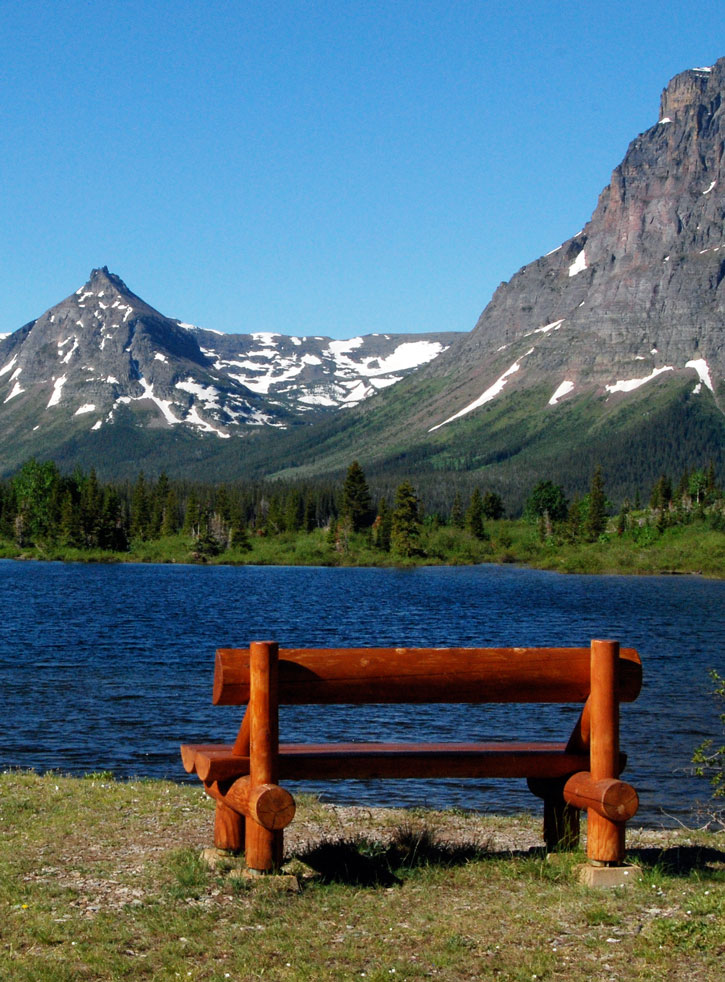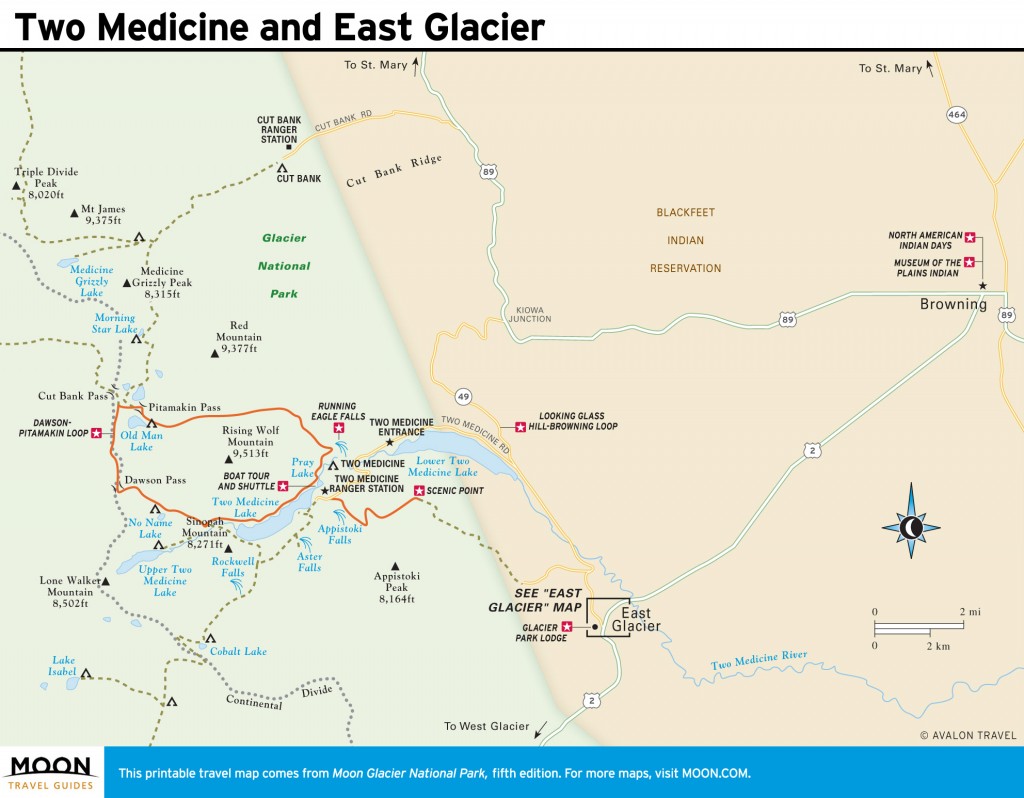
Pray Lake is a good place for paddling and chilly swimming or fishing. Photo © Becky Lomax.
Around the corner, the tiny East Glacier burg on the Blackfeet Reservation buzzes in summer. The Great Northern Railway’s historic headliner hotel, Glacier Park Lodge, dominates the town with its immense Douglas fir lobby. Train travelers taste the history as they step from the depot across a garden walkway to the hotel, framed by the mountains of Dancing Lady and Henry. Hiking, golf, Native American and red bus tours, horseback riding, and swimming delight guests. At night, quiet stretches across the sky, broken only by the rumble of trains rolling by.
Two Medicine acquired its name from Blackfeet legends. According to one story, two Piegan tribes planned to meet for a medicine ceremony in the valley. Failing to find each other, they both celebrated independently. In another version, two lodges for the sun dance sat on either side of Two Medicine Creek. Either way, the name stuck.
The 1896 land sale between the Blackfeet and the federal government included the Two Medicine area. Starving and nearly decimated as a nation, the Blackfeet swapped part of their reservation land from the Continental Divide to the current reservation boundary for $1.5 million—a mere pittance considering what the parklands are worth.
In April 1891 the Great Northern Railway began laying tracks from Cut Bank to Midvale (East Glacier) and over Marias Pass toward West Glacier. As railroad developer James J. Hill sought means to increase ridership on his new line, he spawned a grand plan: a lodge to greet Eastern guests first arriving at Glacier and several chalets sprinkled in the park’s most scenic spots for places to tour. For early visitors getting off the train in Midvale in 1911, Two Medicine Lake was the first stop in Glacier’s backcountry after a bumpy wagon ride. Originally a tepee enclave with canvas walls and wooden floors, the hugely successful camp prompted the railroad to add two log chalets—a dormitory and a dining hall. By 1915, guests arrived on horseback via trail, the first leg on the Inside Trail connecting to Cut Bank and St. Mary Chalets, on Park Saddle Horse Company tours—a three-day trip costing $13.25.

Two Medicine and East Glacier
In 1913, Great Northern’s headliner hotel—the Glacier Park Lodge—finally welcomed arriving train guests, awed at the first glimpse of Glacier. Built on reservation land purchased from the Blackfeet, the posh lodge with a plunge pool in the basement erected its elegantly large lobby with 500- to 800-year-old Douglas firs sent from western Washington and Oregon. Rooms touted such high-class amenities as electric lights and steam heat. The nine-hole golf course followed 14 years later—on which employees were not allowed to play for fear of upsetting high-class tourists.
In 1929, Great Northern introduced the Empire Builder, named after J. J. Hill, as its modern train for the 2,200-mile Chicago-Seattle trip that packaged Glacier Park travel for its passengers. This is still the name for the Amtrak line here. It’s the only U.S. train outside Alaska that stops regularly at a major national park.
In the wake of the Depression, World War II closures, and increasing auto traffic, the Two Medicine Chalets met their demise and were torn down building by building until only the dining hall remained. It’s now the Two Medicine store.
Today, East Glacier is home to less than 400 year-round residents. Brutal winters keep it small. High winds accompanied by frigid temperatures pound the town—so strong that they’ve blown trains off the tracks.
Excerpted from the Fifth Edition of Moon Glacier National Park.